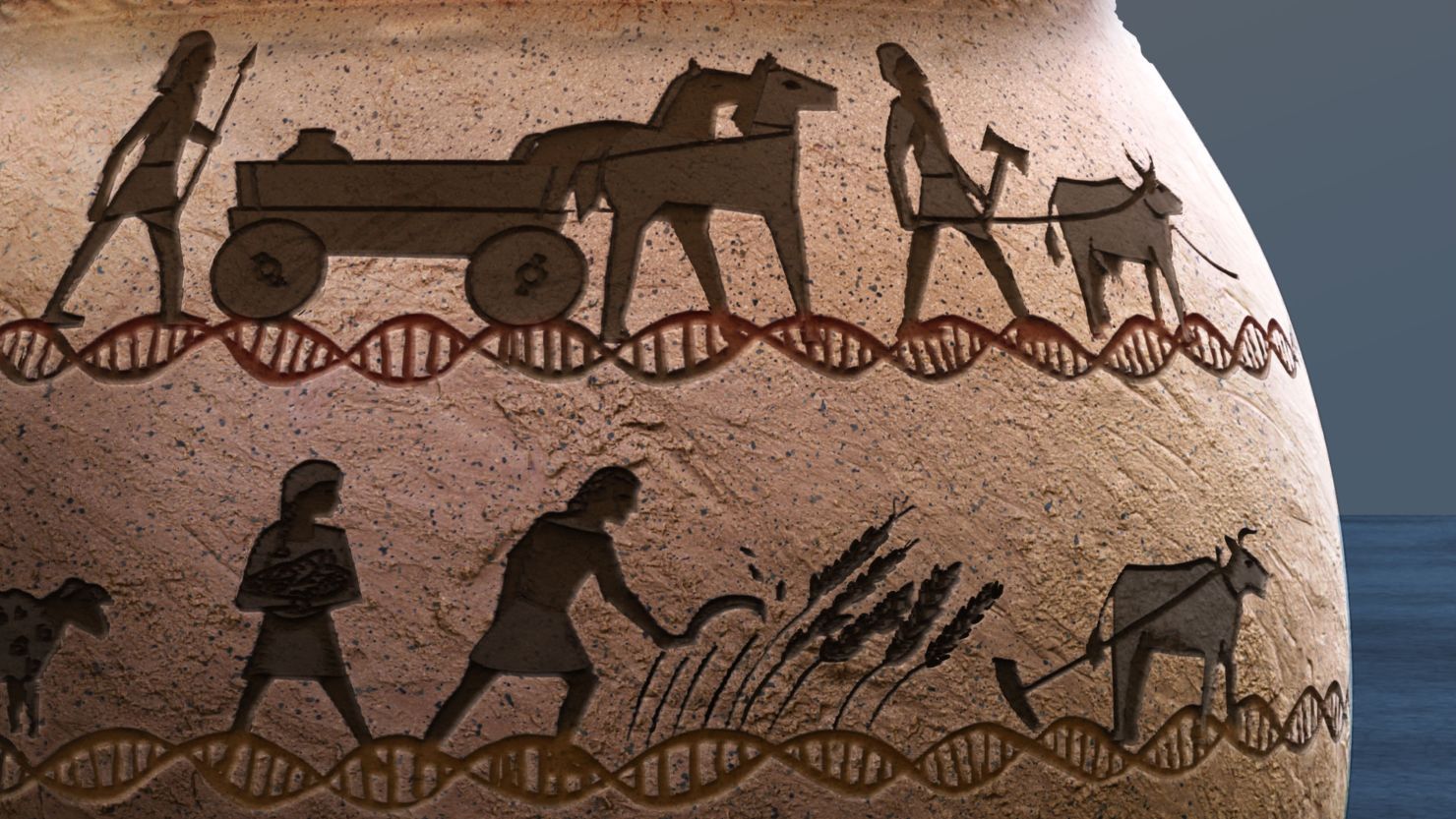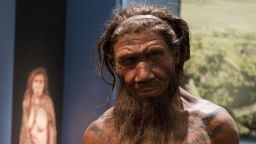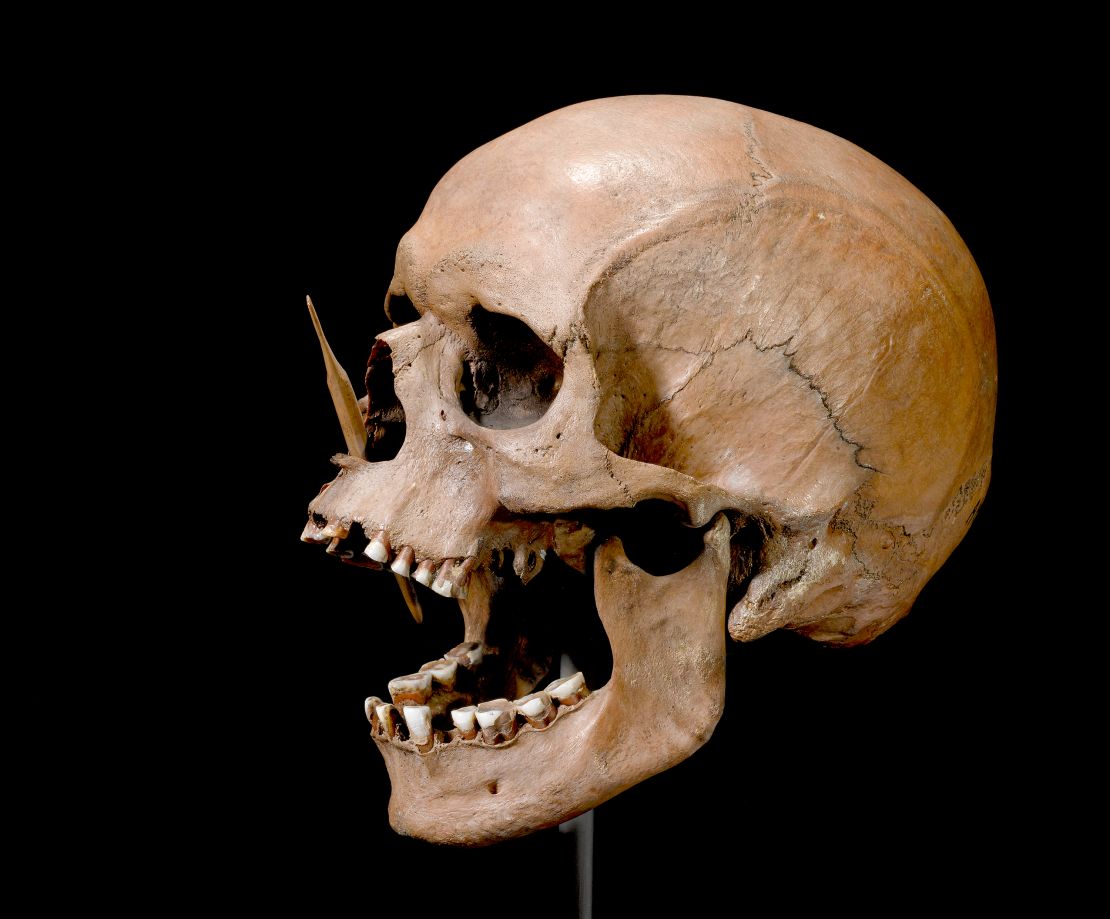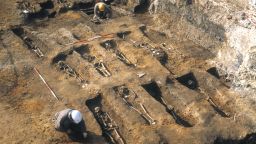Gene that protected humans 5,000 years ago may be linked to debilitating modern disease

By Katie Hunt, CNN
5 minute read
Updated 10:42 AM EST, Thu January 11, 2024

The researchers recovered DNA from the bones of ancient humans to better understand the genetic roots of disease.Sayo Studio
Sign up for CNN’s Wonder Theory science newsletter. Explore the universe with news on fascinating discoveries, scientific advancements and more.CNN —
Scientists have compiled the largest database of ancient DNA based on the bones and teeth of almost 5,000 humans who lived across Western Europe and parts of Central Asia from 34,000 years ago until medieval times.
Analysis of this uniquely detailed pool of ancient genetic information suggests genes that may have once protected prehistoric hunter-gatherers or Bronze Age herders from harmful pathogens may today increase the risk of neurodegenerative diseases such as multiple sclerosis and Alzheimer’s in Europeans.
The ambitious five-year project involving a team of 175 international experts combined previously known ancient genomes with freshly sequenced DNA from hundreds of skeletal specimens sourced from museums and other institutions across Europe. Together this data forms the world’s largest ancient gene bank, according to the scientists involved in the project.

Early risers may have inherited a faster body clock from Neanderthals
Researchers were able to use the database to chart the spread of genes — and diseases — over time as populations migrated and interbred, revealing how specific and dramatic changes in environment, such as the shift from a hunter-gatherer lifestyle to farming, favored certain genetic variants.
By comparing the ancient DNA with modern-day samples, the researchers gained a new biological understanding of debilitating disorders and physical traits in the present day. The initial results from the project were published in four papers in the scientific journal Nature on Wednesday.
“What’s remarkable about this dataset is that now we can actually see what happened in the past, we can actually see what are the genetic variants that change in frequency in the past due to natural selection. And that allows us this very, very fine-grained picture,” said Rasmus Nielsen, a professor of integrative biology and geneticist at the University of California, Berkeley, who helped spearhead the project, at a news briefing this week.

The researchers sequenced DNA from human remains in museum collections around Europe.The Danish National Museum
How Bronze Age herders are linked to MS
One of the key findings from the first batch of research, based on more than 1,600 genomes in the database, was connected to multiple sclerosis, often called MS, a lifelong autoimmune disease of the nervous system that affects an estimated 2.5 million people worldwide. It’s a complex condition shaped by multiple environmental and genetic factors with many potential symptoms, including problems with vision, arm or leg movement, sensation, and balance.
ADVERTISING
Northern Europeans are among those most prone to the the disease, the study noted, but the reasons why are little understood.
Researchers used the database to explore the genetic origins of multiple sclerosis. They found that genetic risk of having the condition correlates to the proportion of ancestry from a group of ancient pastoralists who introduced domesticated animals to Europe around 5,000 years ago.
These nomadic herders of cattle and sheep, known as the Yamnaya, originated from the Pontic steppe, which stretches from southeastern Europe into Kazakhstan. It’s thought they were the first horse riders, making them highly mobile.
When they moved westward into Europe, they brought specific genetic variants that the researchers believe evolved to protect the nomads against pathogens carried by domesticated animals, the study found.
These genetic variants may have subsequently proved beneficial to European populations in making the shift from hunting and gathering to farming.
And because the Yamnaya primarily moved into northern Europe, the team concluded that the increased proportion of pastoralist ancestry in present-day northern Europeans might be partly responsible for the higher prevalence of the disease there.

The Black Death is still affecting the human immune system
“These results astounded us all. They provide a huge leap forward in our understanding of the evolution of MS and other autoimmune diseases,” said William Barrie, a postdoctoral researcher in the University of Cambridge’s department of zoology and coauthor of one of the papers, in a statement. “Showing how the lifestyles of our ancestors impacted modern disease risk just highlights how much we are the recipients of ancient immune systems in a modern world.”
Today, the protective benefits of these genetic variants are no longer as useful, noted coauthor Astrid Iversen, a professor virology and immunology at the University of Oxford.
“We now lead very different lives to those of our ancestors in terms of hygiene, diet, and medical treatment options and this combined with our evolutionary history means we may be more susceptible to certain diseases than our ancestors were, including autoimmune diseases such as MS,” Iversen said in a statement.
Alzheimer’s link
Researchers also mapped the origins of a genetic variant, APOE ε4, known to increase the risk of Alzheimer’s disease. The gene was linked to early hunter-gatherer populations that once inhabited prehistoric Europe, one of the four studies found.
“DNA from hunter-gatherers is present at higher levels in Northeastern Europe, which means the region has an elevated genetic risk of developing Alzheimer’s disease,” Barrie said.
Similarly, the ancient genetic information shed light on the evolutionary history of traits such as height and lactose tolerance.
In commentary accompanying the research, Samira Asgari, an assistant professor in genetics and genomic sciences at the Icahn School of Medicine at Mount Sinai in New York, said that it was crucial to extend these types of studies beyond Europe to other regions to “better understand how differences in population history might have contributed to the risk of autoimmune diseases such as multiple sclerosis.”

6 historical mysteries that scientists finally cracked in 2023 — and one they didn’t
“Although human biology is shared, each population has a unique history and focusing on a single population limits opportunities for discoveries that can bring insights that advance medicine,” wrote Asgari, who was not involved in the four studies.
What do you think?Leave a comment
The new database provides the “most comprehensive views of the genetic history of a region to date,” said Tony Capra, an associate professor of epidemiology and biostatistics in the Bakar Computational Health Sciences Institute at the University of California, San Francisco.
“This has enabled the authors to fill in missing details in our understanding of both who lived where and when as well as how natural selection shaped the traits of modern individuals,” he said.
However, Capra cautioned that there is “rarely a simple answer to why one population may have a genetic variant while another does not.”
“The evolutionary history of our species makes many contributions to our health and traits today,” said Capra, who wasn’t involved in the research, via email.
“However, both then and now, all these genetic effects are modulated by the environment. And for most traits, MS included, the genetic effects are the result of multiple genetic variants,” he said. “Ultimately, we can’t say that MS came from Bronze Age populations, but these populations’ movements and environments contribute to differences in MS risk today.”
